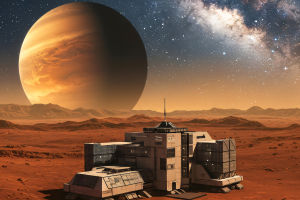Hey Lykkers! Have you ever wondered how farmers decide the perfect time to water their crops or how they know exactly where pests might strike? Well, it turns out they’re getting some serious help from a powerful tool called big data.
Today, let’s dive into how big data is quietly changing modern agriculture, making farming smarter, greener, and more efficient than ever.
What Is Big Data in Agriculture?
Big data refers to massive volumes of information collected from diverse sources, processed and analyzed to extract valuable insights.
In agriculture, this data comes from soil sensors, drones, satellites, weather stations, GPS devices, and even farmers’ smartphones. The goal? To help farmers make precise, data-driven decisions to optimize crop growth and resource use.
According to a 2019 report by MarketsandMarkets, the global precision farming market—which heavily relies on big data—is projected to reach $12.9 billion by 2027, reflecting how rapidly this tech is being adopted.
How Does Big Data Work on Farms?
Here’s how it plays out in real farming:
Soil sensors measure moisture, pH, and nutrient levels in real time, allowing for targeted irrigation and fertilization. For instance, if one part of a field is dry, sensors alert the farmer to water only that section instead of the entire area, saving millions of liters of water annually.
Satellite imagery and drones provide detailed aerial views that reveal crop health, detect pest infestations, and identify disease outbreaks early. NASA’s Earth Science program collaborates with agricultural stakeholders to monitor vegetation health worldwide, enabling timely interventions.
Weather data integration helps farmers anticipate storms, droughts, or frost. Companies like The Climate Corporation use predictive analytics combining weather forecasts and field data to advise farmers on the best planting and harvesting times.
GPS-guided tractors and machinery allow for precision planting, reducing seed waste and overlapping. For example, John Deere’s AutoTrac system can improve efficiency by up to 10%, saving fuel and increasing yields.
Real-World Success Stories
PrecisionHawk, a drone services company, collects high-resolution images that help farmers identify stressed crops or nutrient deficiencies. This approach has increased crop yields by up to 20% in some regions.
In Brazil , farmers use big data platforms that combine soil data with historical crop performance to decide which crops to plant where, improving productivity on challenging terrain.
Why Big Data Matters for Sustainability
Agriculture accounts for roughly 24% of global greenhouse gas emissions (FAO 2021). Big data-driven precision farming reduces excess use of water, fertilizers, and pesticides, cutting emissions and pollution. For example, targeted fertilizer use can reduce nitrous oxide emissions—a potent greenhouse gas—by up to 30%.
Additionally, by increasing productivity on existing farmland, big data reduces the need to clear forests for agriculture, preserving biodiversity and carbon sinks.
Challenges and the Road Ahead
While promising, big data adoption faces hurdles:
Accessibility: Smallholder farmers, who make up 80% of the world’s farmers (World Bank), often lack access to affordable technology and reliable internet.
Data Privacy: Ownership and security of farm data is a growing concern, with calls for transparent policies to protect farmers.
Training: Farmers need education to interpret data effectively. Institutions like the International Food Policy Research Institute (IFPRI) run programs to bridge this knowledge gap.
Efforts are underway globally to develop affordable tools, improve connectivity, and provide farmer training to make big data inclusive.
Final Thoughts
Big data is quietly revolutionizing agriculture. It’s helping farmers grow more food efficiently, use fewer resources, and reduce environmental impact—all crucial as we face the challenge of feeding a growing global population sustainably. Next time you bite into a fresh tomato or crunch some lettuce, remember the smart data-driven decisions that made it possible.
Curious about how AI and robotics fit into farming’s future? Just let me know, Lykkers!


